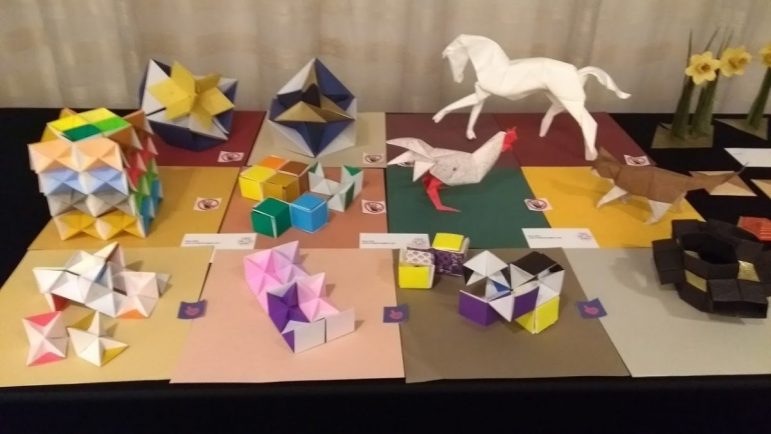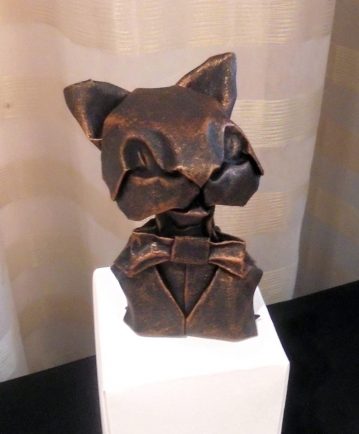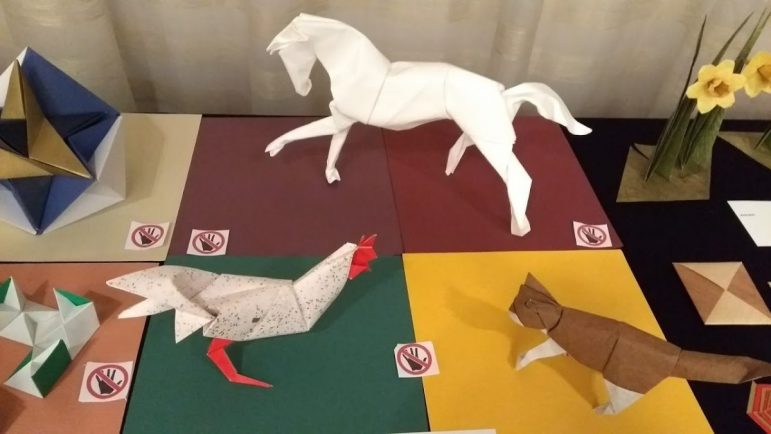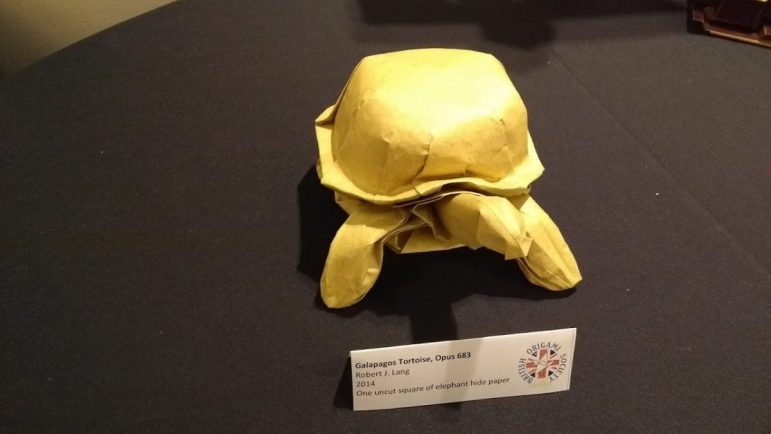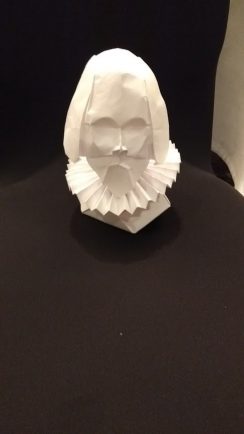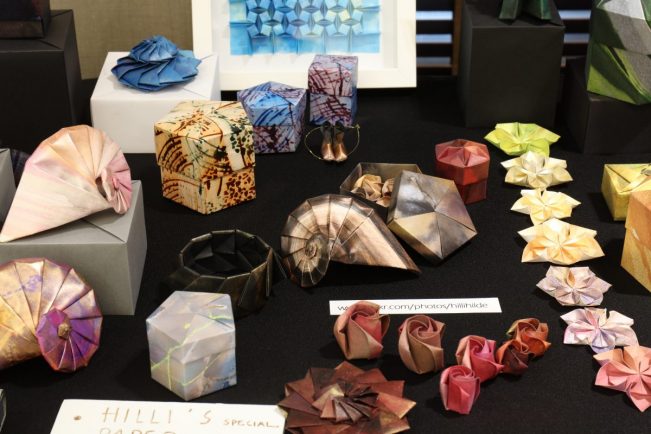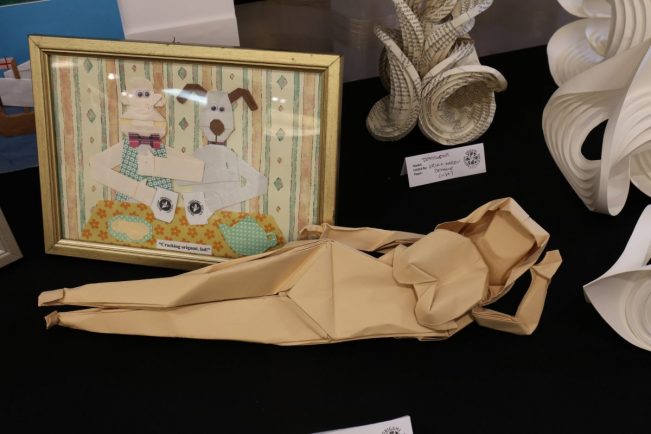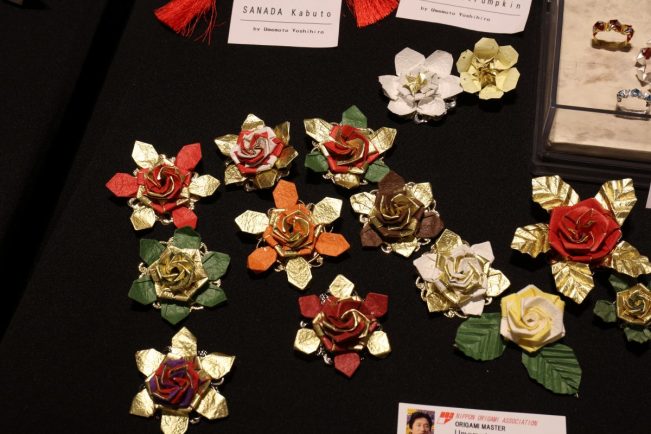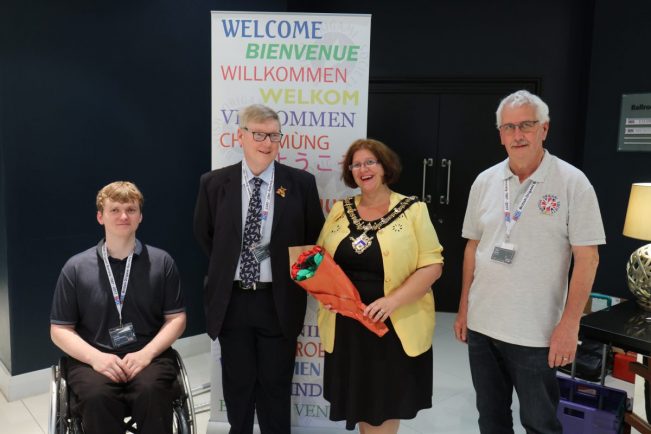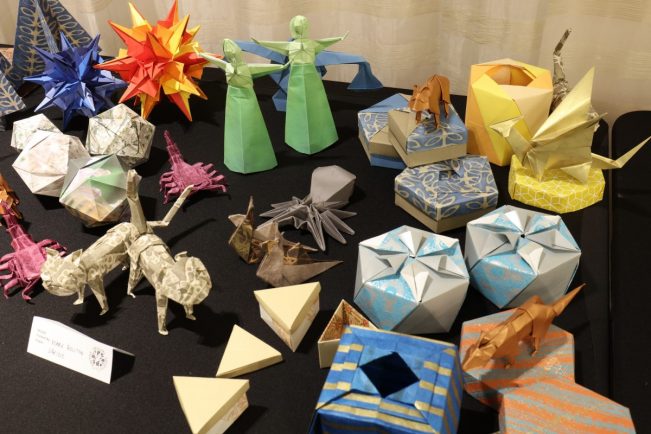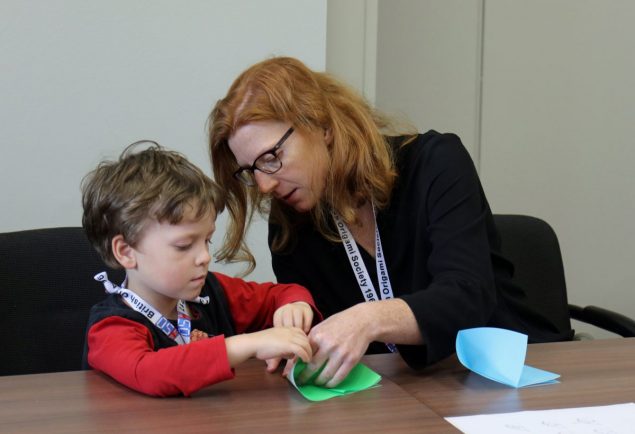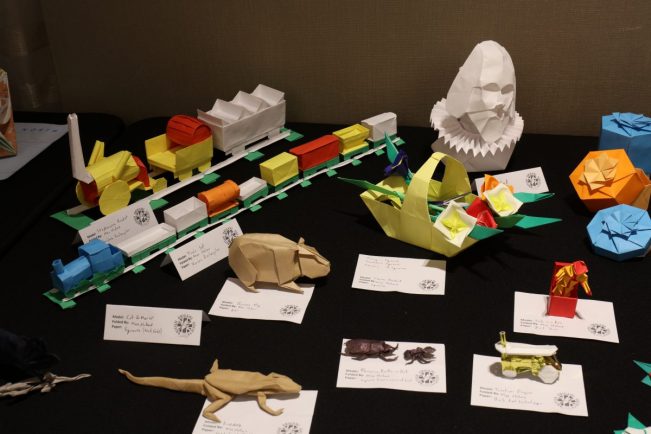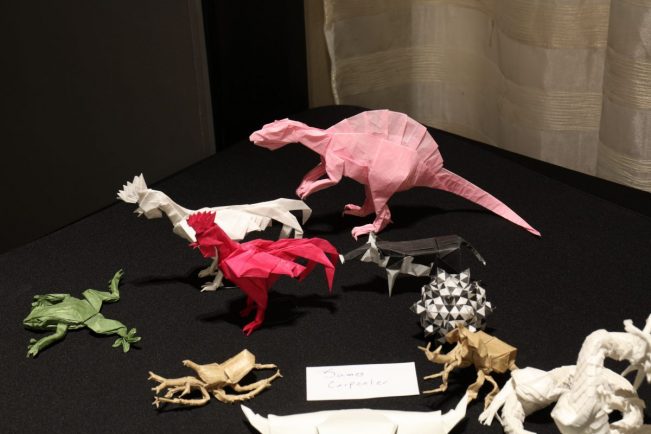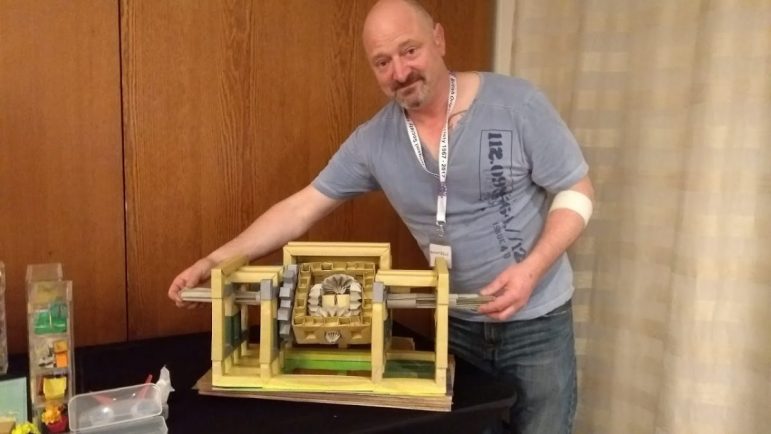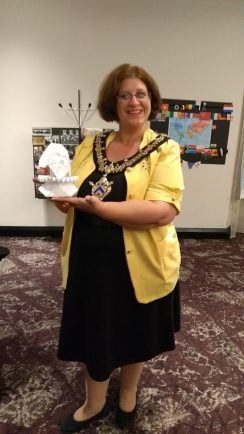FOR MANY, the ancient art of origami extends to little more than swan napkins and paper flowers.
But there is a lot more to the centuries old craft than meets the eye.
And the Observer was invited to learn just what NASA, Rupert Bear and black holes have in common with the ancient tradition at the 50th British Origami Society (BOS) anniversary in Stratford.
BOS was the first of several origami societies to form across the world with some 700 members, providing resources, its own publication and holding two origami conventions each year.
And this summer, hundreds flocked from across the globe to attend its centenary event to learn from some of the world’s best origami artists including Paul Jackson, Giang Dinh, Tomoko Fuse and Robert Lang.
Among the dazzling creations on display at the Crowne Plaza Hotel was dragons, insects, animals, jewellery, fireworks with exploding mechanisms and even Stratford’s most famous son.
Known commonly as ‘the Japanese art of paper folding’, the origin of origami is hotly disputed by those who believe it evolved independently in many ways across the globe.
It is thought paper was invented in China around 105AD and many connect this to the birth of origami. But since both cloth and papyrus came before paper, some enthusiasts argue that ‘folding’ would have almost certainly come first.
In Japan, some of the earliest examples of the craft manifested in the 8th century, often as butterflies used to decorate wine bottles for ceremonious occasions.
And in China the ‘yuanbao’ – paper folded to look like gold nuggets – is probably the oldest example, thought to date back to 1000AD.
Europe also has a tradition of paper folding dating from around the 12th century, when the Moors brought mathematically based folding to Spain.
But origami as a form of craft did not appear in recorded history until the 19th century.
Instrumental in the art’s 20th century development was the ‘Grandmaster’ of origami and BOS vice president, the late Akirsa Yoshizawi, who served in the army medical corps in Hong Kong and presented troops with his designs to cheer them up.
The tradition quickly gained momentum across the world and in Britain was given a major boost by Rupert Bear creator, and eventual BOS president Robert Harbin, who included paper folding instructions in Rupert annuals in the 1940s.
Stratford event organiser Dave Venables said: “I discovered origami through the 1946 Rupert annual. And I used to rush home from school to watch Robert Harbin on children’s TV in the 70s. He showed you how to make an origami frog which I persevered with for days. After that I was hooked.”
As well as its therapeutic values, origami is as simple as it is complex with mathematicians and scientists using the art to design cutting-edge technology. From airbags and aircraft to medical implants and black holes, origami goes way beyond fancy napkin folding.
Among those teaching at the convention was former NASA physicist Robert Lang who used ‘folding algorithms’, to allow apparatus to fold down and create more room on board manned rockets. He is now a full time origami artist, known for his creations which often centre around nature and notably for an origami cuckoo clock which took him three months to design and six hours to fold.
Also displaying his work in the exhibition was Dave Brill – part of the BOS council, and another whose love of the art was inspired by Robert Harbin.
He said: “I love origami for the fact it can be done using a simple piece of paper. I discovered it when I was young and didn’t really possess any stationary unlike kids these days. I really love the challenge of creating something new out of just one piece of paper. Although it’s simple, there’s so much variation with origami, you can make it elegant and detailed, there’ s so many different types and there’s always more to discover.”
Although traditionally origami designs are created with one piece of paper, the vast display demonstrated many contemporary techniques including modular, tessellation, 3D and wet paper folding – invented by Yoshizawi to allow for more rounded folds and a smoother finish.
While the ancients origins of origami may remain open to debate, it is certainly an art which is very much alive and well today judging by the work showcased in Stratford.
Visit www.britishorigami.info for more information.

